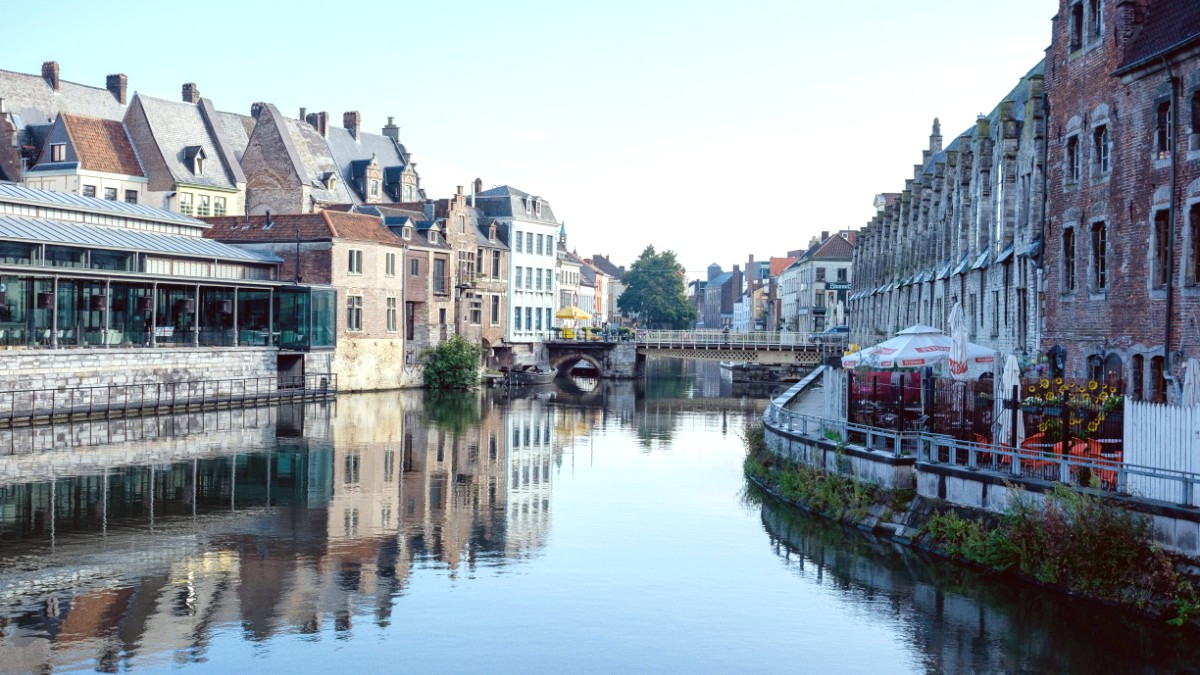
Flanders, Belgium
Ghent's skyline is defined by its impressive historical structures, each with a story.
Discover architectural masterpieces that highlight the city's rich past and present.
Graslei & Korenlei: Open 24/7, free access. Visit in late afternoon or early evening when lights illuminate buildings.
Consider purchasing the CityCard Gent. It covers public transport and museum entries, for convenience and savings.
Ghent's city center is compact and walkable. Wear comfortable shoes.
A canal boat tour Offers a distinct perspective of the city's historic facades and waterways.
Ghent's illuminated buildings at night are specifically magical. Stroll along Graslei and Korenlei after dark.
Trams and buses efficiently link various parts of the city. Useful for longer distances like to the train station or Blaarmeersen.
Ghent presents a diverse range of museums, catering to various interests.
Houses a rich collection of European art from the Middle Ages to mid-20th century, a strong focus on Flemish masters. Highlights include works by Hieronymus Bosch, Peter Paul Rubens, Anthony van Dyck, and French Impressionists.
Ghent's municipal museum of contemporary art, featuring a dynamic collection of post-1945 art. It presents thought-provoking exhibitions.
Located in the renovated Bijloke Abbey, STAM tells Ghent's story through interactive exhibits. A comprehensive overview of the city's development.
Explores product design, industrial design, and applied arts from the 17th century to the present day. Features historical and contemporary pieces.
A charming folk museum offering a glimpse into everyday life and customs of the 20th century in Flanders. It evokes a sense of nostalgia.
Located in a former psychiatric hospital, this museum explores the history of psychiatry and mental health, as well as art brut. It presents an unique experience.
Check individual museum websites for current temporary exhibitions and events. The CityCard Gent often includes free entry to these museums.
Consider a museum pass for widespread access. It covers many attractions and often saves money if you visit several sites.
For popular exhibitions or specific time slots, booking tickets online beforehand is a good idea to avoid queues.
Ghent's history unfolds through its well-preserved districts and ancient structures.
Ghent integrates green spaces and waterways into its urban fabric, offering natural respites.
Find tranquil escapes and picturesque views amidst the city's hustle and bustle.
Green spaces for relaxation and leisurely strolls.
Explore Ghent's connection to water and outdoor activities.
Capture breathtaking panoramas of the city.
Further historical sites beyond the main attractions.
Venture off the main tourist paths to discover Ghent's less-known but equally captivating spots.
Werregarenstraatje is a legal street art alley where artists freely spray paint. The art changes constantly, a dynamic and colorful visual experience unique in Belgium.
Klein Begijnhof and Groot Begijnhof Sint-Elisabeth are UNESCO World Heritage sites. These peaceful, picturesque communities were historically for beguines, offering a serene escape.
A massive medieval cannon in a small square near Vrijdagmarkt. An impressive piece of historical artillery and a photo opportunity, showing Ghent's past military might.
The former residence of Charles V. Today, a quiet residential area with remnants of the original palace walls and atmospheric streets.
Explore the area's historyA serene and historic cemetery transformed into a park. A tranquil escape for quiet contemplation amidst old graves and mature trees.
Find a peaceful spotA historic monastery, now part of the university. Its calm courtyards offer a peaceful escape from the city buzz.
A grand interior with an impressive art collection, including a painting by Van Dyck. A significant religious site.
Many museums are closed on Mondays, so plan your itinerary accordingly.
Verify opening times on official websites before your visit.
Venture off the main tourist paths to discover Ghent's less-known but equally captivating spots.
Both Klein Begijnhof and Groot Begijnhof Sint-Elisabeth are UNESCO World Heritage sites.
A massive medieval cannon located in a small square near Vrijdagmarkt.
Known as Graffiti Alley, a legal street art spot where artists freely express themselves with spray paint.
This ever-changing canvas is a testament to Ghent's urban art culture.
The former residence of Charles V, Holy Roman Emperor. Today, a quiet residential area.
Explore the atmospheric streets for a sense of historical grandeur in a residential setting.
An old cemetery transformed into a tranquil park, offering an unique blend of history and nature.
Discover a lesser-known green space that combines history with natural beauty.
The city's compact center retains its medieval layout, making exploration easy and atmospheric.
Beyond the official Graffiti Alley, keep an eye out for diverse street art throughout the city.
The waterways are central to Ghent's beauty; a boat tour or a stroll along the quays offers spectacular perspectives.